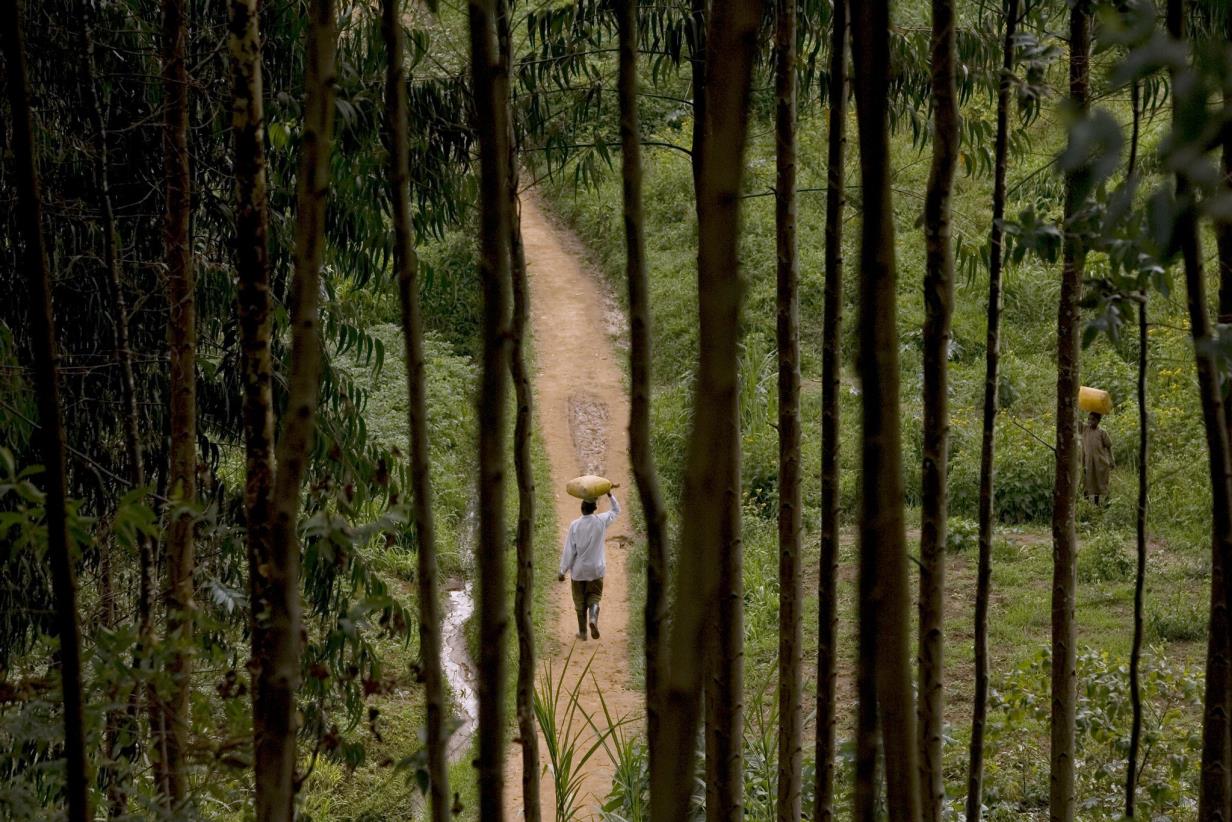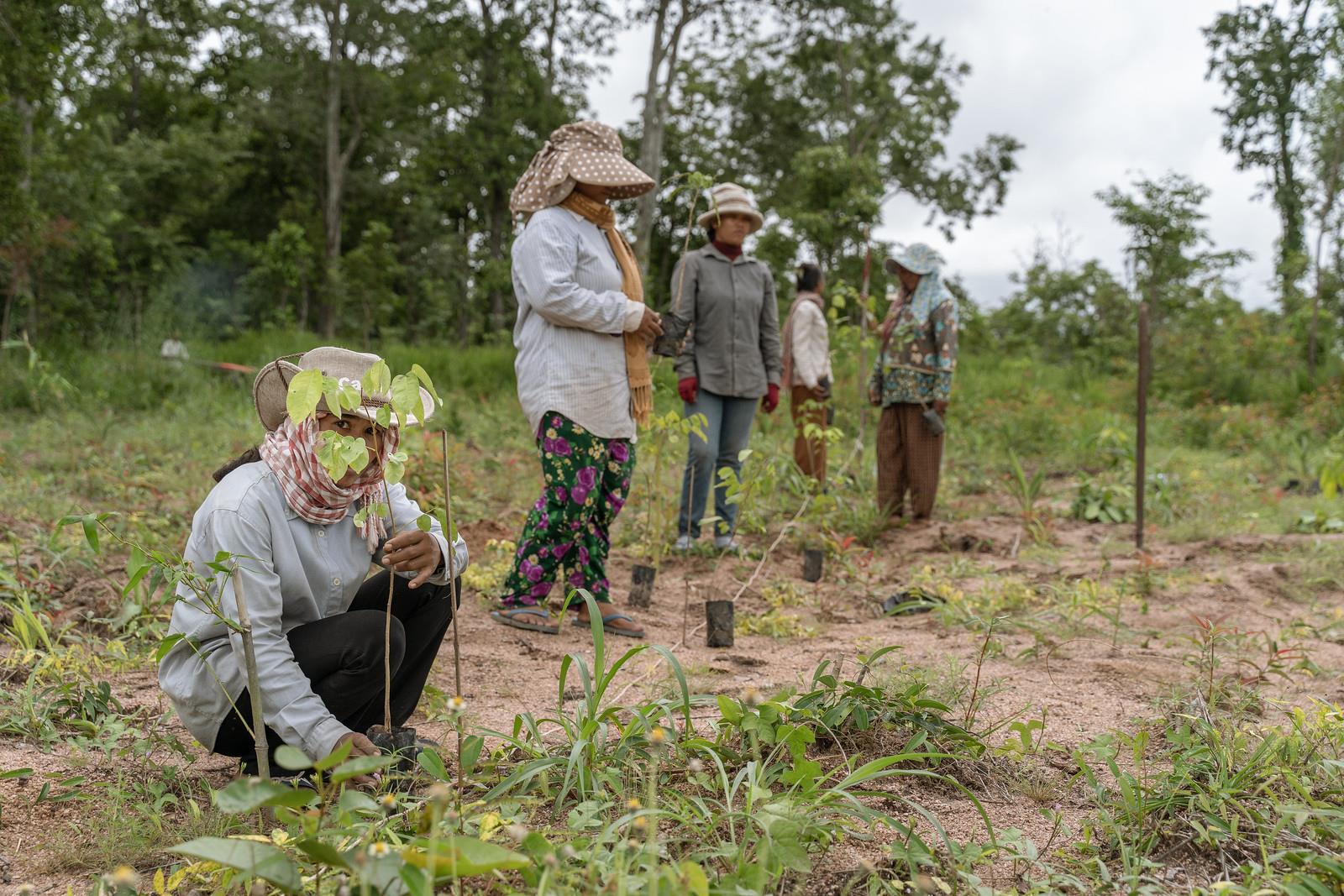
Four beauty products found in forests
How natural cosmetic and beauty products are providing forest communities with livelihood opportunities
FAO and the Non-Timber Forest Products – Exchange Programme network are providing recommendations to help rural communities explore livelihood opportunities in the natural products market. ©FAO/Giulio Napolitano
18/03/2022
Interested in natural cosmetic products, ones that support local communities and don’t deplete our natural resources? You aren’t alone!
Growing consumer interest in the environmental and ethical credentials of cosmetics has spurred interest in sustainably- and ethically-sourced beauty products, which include many forest products, also known as non-wood forest products (NWFPs).
Growth in natural cosmetics industries is at almost 10 percent per year. In order to tap into this market to raise the income of rural, forest communities worldwide, FAO and the Non-Timber Forest Products – Exchange Programme (NTFP-EP) network examined some of the different, forest-derived beauty products, which have been used since antiquity in traditional practices and trade in various Asian and Pacific countries.
With the publication, Naturally Beautiful: Cosmetic and Beauty Products from Forests, FAO and the NTFP-EP bring attention to the role forests play in supplying beauty products and show how these products can provide livelihood options for forest communities. It assesses constraints and identifies opportunities for growth, particularly for community-based enterprises.
Here are four beauty products found in nature that hold great potential to support forest communities:
1) Sandalwood oil in the Asia-Pacific region
Sandalwood oil has been an extremely important source of income and trade in the Pacific for over 200 years. Sandalwood trees are found in various countries from India, Australia and Indonesia to the Pacific Island countries. Sandalwood oil is distilled from the tree’s roots, and owing to its coveted fragrance, it is added to commercial products such as soaps, candles, perfumes and incense.
Due to the overharvesting of these trees, stocks were decimated, and sandalwood trade became almost non-existent. However, its potential for generating income is now encouraging communities to establish new sandalwood plantations in Australia and create better trade management efforts in Vanuatu. FAO is encouraging global communities to better manage and conserve sandalwood trees in order to sustainably tap into this potential income source and preserve its cultural importance.


Millions of people in the world depend on forests for their employment. The sustainable management of these natural resources are crucial to supporting forest communities. Left/Top: ©FAO/Enric Catala Conteras Right/Bottom: ©FAO/Hoang Dinh Nam
2) Gurjum balsam resin in Cambodia
In Cambodia, resin tapped from dipterocarp trees, commonly known as gurjum balsam, is used as a clouding agent in polishes and paints or to waterproof umbrellas and baskets. It can also be processed into an essential oil and is mainly used in the perfume industry. Many people from indigenous communities collect gurjum balsam resin as an important source of income.
Since 2003, illegal logging and destructive harvesting has led to a production decline. The lack of supply and general lower demand has jeopardized the resin industry in the country. FAO has offered recommendations in protecting natural resources in the Cambodian forests and sustainably reviving this resin collection activity. This includes training people to collect resin more effectively, to learn filtering techniques that will add value to the products and to collect resin in new containers to reduce impurities and increase market value.
3) Plant-based, medicinal baths in Viet Nam
In the Sapa District in northern Viet Nam, the Red Dzao people in the Ta Phin commune have a traditional practice of a medicinal bath, referred to as “Dia dao xin”. As a part of their culture, the Red Dzao people bathe using herbal plants consisting of five to ten different varieties. They boil these plants and pour this water in barrels for people to soak in. It is believed that these medicinal baths help with fatigue and blood circulation. In addition, this treatment removes dead skin and open pores.
The community offers these treatments for tourists in homestays in Ta Phin and sells packages of pre-mixed powdered ingredients to visitors and hotels. However, unsustainable harvesting of plants and exploitation by outsiders threaten their local business. A community joint stock company was established in 2006 to address these challenges. This company model has developed certified medicinal treatments and products, creating jobs and stable income for over 100 households which also helped to unify the community.

Non-wood forest products provide employment opportunities for rural people in high-altitude areas of Nepal where income sources are limited. ©FAO
4) Spikenard oil in Nepal
Found in the Himalayan region, the spikenard plant, also known as jatamansi in Nepal, is used to make oil that is found in products such as perfumes, lotions, anti-ageing creams, deodorants and colour cosmetics in the international beauty industry. The collection and trade of spikenard plants provides employment for the poor in rural, high-altitude areas of Nepal.
However, the spikenard plant is listed as “Critically Endangered” on the IUCN Red List. Increased demand and high economic value led to over- or improper- harvesting of immature plants. Infrastructure development and human settlement further added to the loss of the spikenard habitat. However, its socio-economic value has fostered efforts by the government and several organizations to improve resource management and regulate harvesting practices. FAO is encouraging local participation in the value chain to promote community businesses. The development of markets will also enhance economic potential for spikenard oil.
By helping communities manage forests sustainably and explore livelihood opportunities in NWFPs, FAO is helping galvanize local economies and further forest conservation efforts globally.
Related links
Learn more
- Publication: Naturally Beautiful: Cosmetic and Beauty Products from Forests
- Website: FAO Forestry
- Website: International Day of Forests

